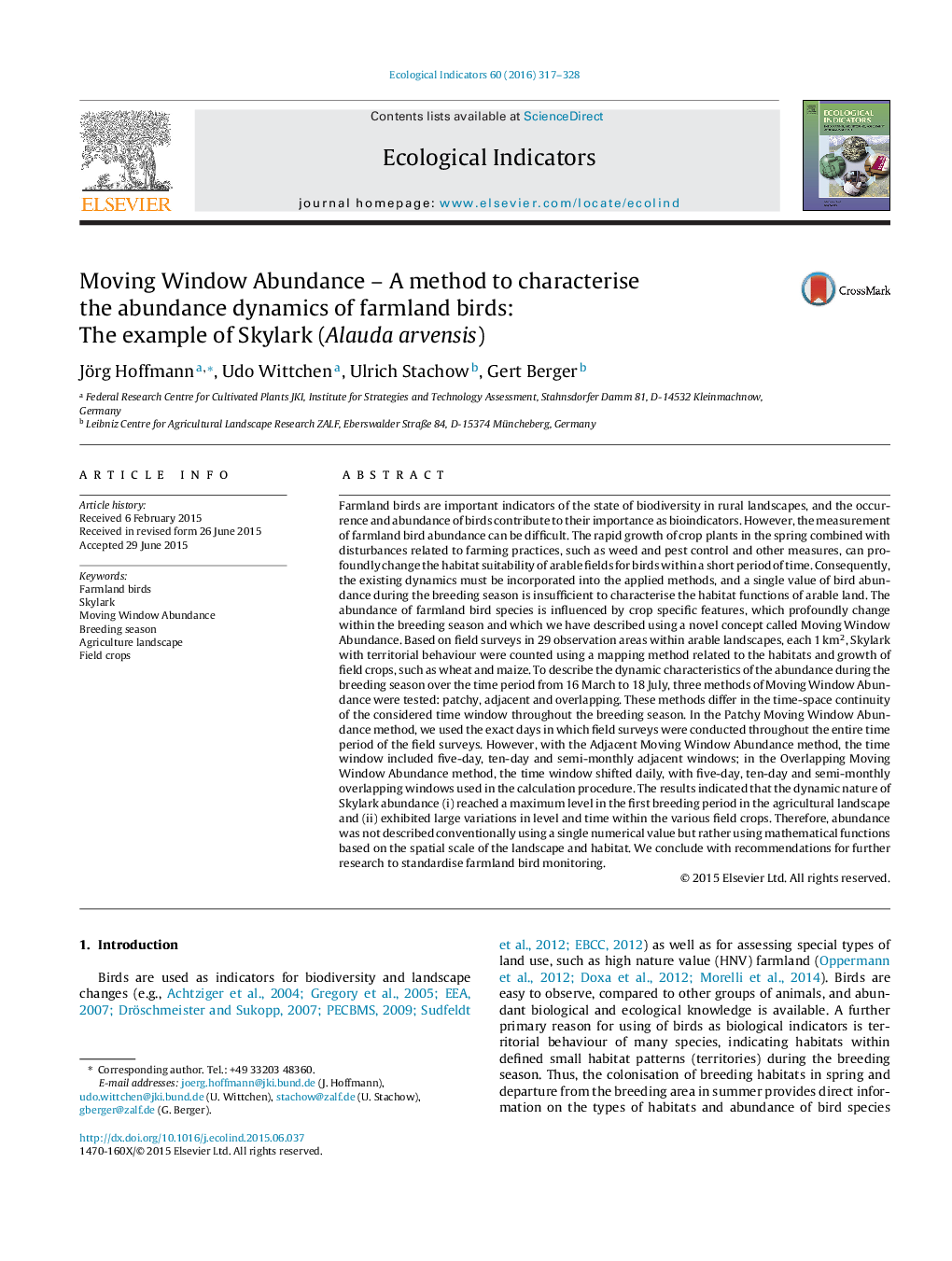| Article ID | Journal | Published Year | Pages | File Type |
|---|---|---|---|---|
| 6294044 | Ecological Indicators | 2016 | 12 Pages |
Abstract
Farmland birds are important indicators of the state of biodiversity in rural landscapes, and the occurrence and abundance of birds contribute to their importance as bioindicators. However, the measurement of farmland bird abundance can be difficult. The rapid growth of crop plants in the spring combined with disturbances related to farming practices, such as weed and pest control and other measures, can profoundly change the habitat suitability of arable fields for birds within a short period of time. Consequently, the existing dynamics must be incorporated into the applied methods, and a single value of bird abundance during the breeding season is insufficient to characterise the habitat functions of arable land. The abundance of farmland bird species is influenced by crop specific features, which profoundly change within the breeding season and which we have described using a novel concept called Moving Window Abundance. Based on field surveys in 29 observation areas within arable landscapes, each 1Â km2, Skylark with territorial behaviour were counted using a mapping method related to the habitats and growth of field crops, such as wheat and maize. To describe the dynamic characteristics of the abundance during the breeding season over the time period from 16 March to 18 July, three methods of Moving Window Abundance were tested: patchy, adjacent and overlapping. These methods differ in the time-space continuity of the considered time window throughout the breeding season. In the Patchy Moving Window Abundance method, we used the exact days in which field surveys were conducted throughout the entire time period of the field surveys. However, with the Adjacent Moving Window Abundance method, the time window included five-day, ten-day and semi-monthly adjacent windows; in the Overlapping Moving Window Abundance method, the time window shifted daily, with five-day, ten-day and semi-monthly overlapping windows used in the calculation procedure. The results indicated that the dynamic nature of Skylark abundance (i) reached a maximum level in the first breeding period in the agricultural landscape and (ii) exhibited large variations in level and time within the various field crops. Therefore, abundance was not described conventionally using a single numerical value but rather using mathematical functions based on the spatial scale of the landscape and habitat. We conclude with recommendations for further research to standardise farmland bird monitoring.
Related Topics
Life Sciences
Agricultural and Biological Sciences
Ecology, Evolution, Behavior and Systematics
Authors
Jörg Hoffmann, Udo Wittchen, Ulrich Stachow, Gert Berger,
